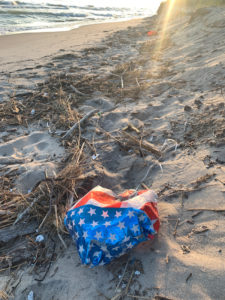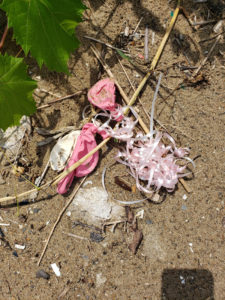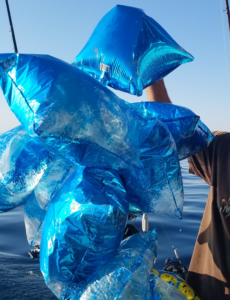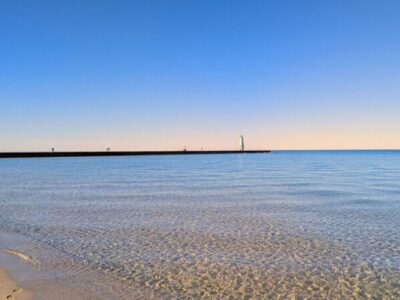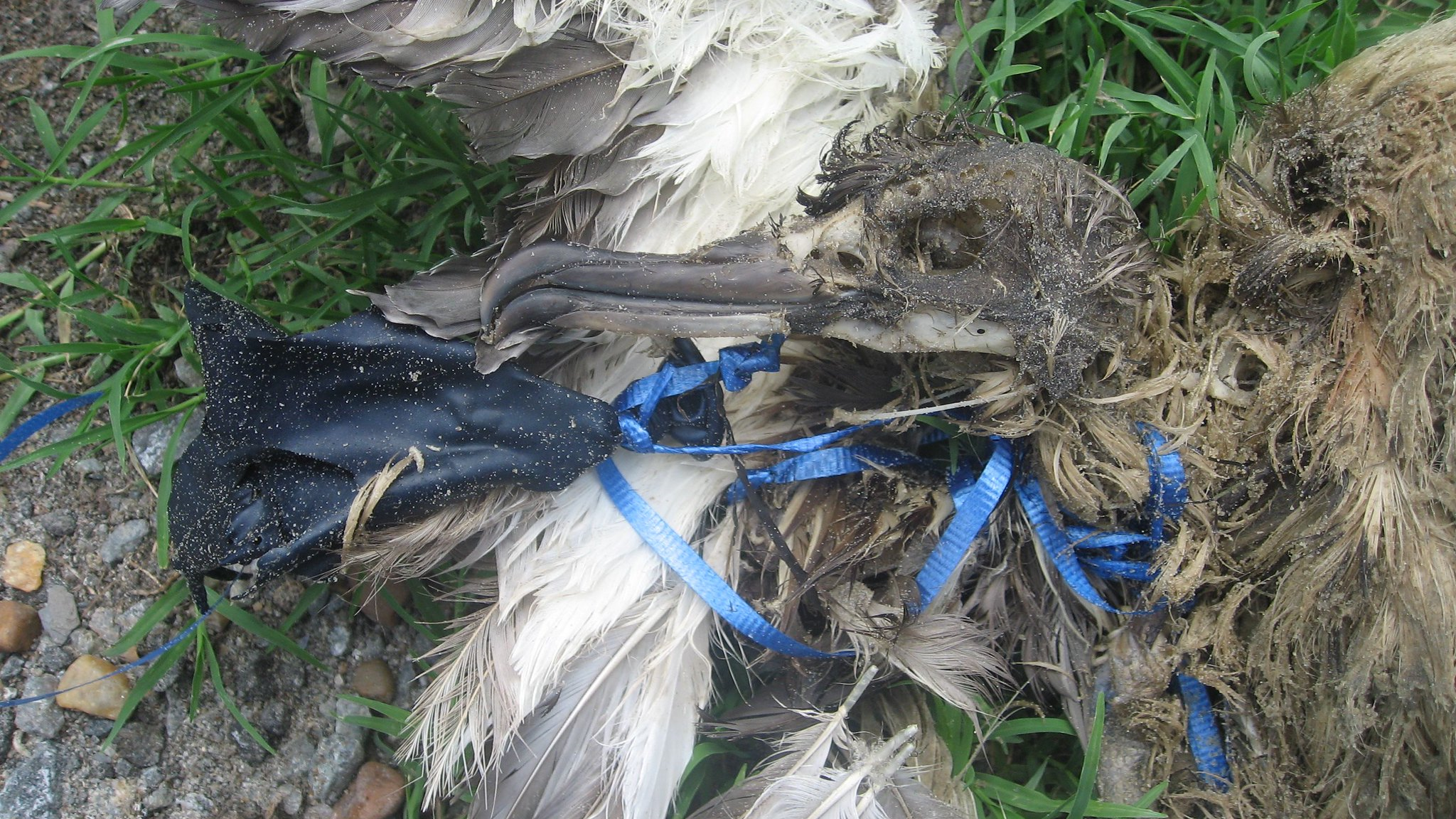
Balloons are synonymous with celebration – birthdays, weddings and graduation ceremonies. But once the party is over, discarded balloons can kill wildlife and pollute the environment.
Lara O’Brien, a master’s student at the University of Michigan’s School for Environment and Sustainability, is working to draw attention to the problem those leftover balloons create in the Great Lakes region.
In June, she launched a citizen science survey to collect reports of balloon debris on local beaches and riverbanks. As of the end of October, she had just over 1,500 unique reports of balloon fragments. That’s 1,500 possibilities for seabirds or other wildlife to be injured or killed when they mistake fragments for food or become entangled in long ribbons or string.
O’Brien is not alone in her concern about balloons in the Great Lakes. Volunteer trash pickup days sponsored by the environmental group Alliance for the Great Lakes tallied more than 18,000 balloons, balloon pieces or strings along Great Lakes shorelines between 2016 and 2018.
“In 2018, 87 percent of the litter picked up by Adopt-a-Beach volunteers was plastic,” said the group’s spokesperson Jennifer Caddick. “While there are many sources of plastic pollution, balloons are an easily preventable source. We encourage people using balloons as part of their celebrations to be thoughtful about disposing of them properly after the event.”
O’Brien mapped reported balloon debris in her survey and found three distinct hotspots. A two-mile stretch of beach at the Indiana Dunes State Park across Lake Michigan from Chicago gets the top ranking with a tally of 242 balloons or pieces of balloons since June.
“There is a woman who walks her dog there every Sunday and she sends me updates,” said O’Brien. “She once found 85 pieces of balloons in one walk.”
Other hotspots include the shoreline around Holland, Michigan, across the lake from Milwaukee, and the Windsor-Lake St. Clair shoreline across from Detroit.
All three locations have one thing in common – they are across a lake from a major city. Prevailing west to east winds drive balloons released in those cities onto beaches across the water.
But balloons can travel even longer distances. In 2013, elementary school students released 300 helium balloons as part of a school project in Derby, England. While some were discovered in Denmark and The Netherlands, one was found in New South Wales, Australia, 10,545 miles away.
Banning balloon releases
Balloons are generally made from one of two materials – mylar or latex. Mylar consists of nylon with a thin metal coating and does not biodegrade. Latex is made of rubber and is biodegradable, but can take months or years to degrade, depending on conditions.
“Latex is more deadly for seabirds,” said O’Brien. “It floats on water and they mistake it for prey. It gets stuck in their digestive system and obstructs it.”
She pointed to a University of Tasmania study in the journal Scientific Reports in March showing that balloons are the highest-risk plastic debris item for seabirds – 32 times more likely to kill than ingesting hard plastics.
Meanwhile in California, mylar balloons are responsible for increasing numbers of power outages. Their metal coating conducts electricity, causing shorts when they come in contact with powerlines. The Los Angeles Daily News reports that from 2014-2018, the number has nearly doubled, from 656 outages to 1,128 per year.
Some states have banned the release of balloons, including California, Connecticut, Florida, Tennessee and Virginia, according to Balloons Blow, a Florida-based environmental group. While there are no Great Lakes states or provinces on that list, several American and Canadian cities around the lakes have either banned or set limits on balloon releases, including Toledo, Ohio, as well as Toronto, Kingston and Hamilton – all in Ontario.
The executive director of the Balloon Council – a New Jersey-based industry group representing retailers, distributors and manufacturers – says her group lobbies for education over legislation.
“TBC’s product labeling, media relations, public awareness and legislative initiatives have helped maintain consumers’ ability to fully enjoy balloons,” said Lorna O’Hara. “Our message is simple: Balloons should never be released and our motto is ‘Don’t let go: Weight. Inflate. Enjoy.’
Meanwhile, O’Brien, whose website includes suggestion for balloon alternatives such as giant soap bubbles, is planning to continue her balloon debris survey after she graduates next spring.
“I hope it will help to change policies at the state level, the national level and maybe even further,” she said.
Featured Image: Dead bird in balloon string, Photo by U.S. Fish and Wildlife Service via flickr.com cc 2.0
4 Comments
-
The balloons are easy to pick up, the ribbons are another story, When I clean the beach at Point Clark, Ontario, I carry a small set of scissors. The ribbons wind their wary around Willow roots which are particularly tangled and take considerable time to cut the ribbon out.
-
A few year back i motored a sailboat across Lake Michigan from Chicago to Holland for winter storage. OMG! At (9) nine different points along this ~60 mile journey i found various balloon groups floating. My path was just a razor thin line in a vast sea. You do the math – how many balloons are out there floating around?
-
This is such a sad situation! People, apparently, don’t consider the consequences when launching balloons in memory of loved ones – have schools, funeral homes, etc. been made aware of the environmental impact these balloons cause? It seems that education is needed!
-
We sail approximately 1000 miles on Lake Michigan every summer. These balloons are every where. They are by far the most garbage in the lake.


